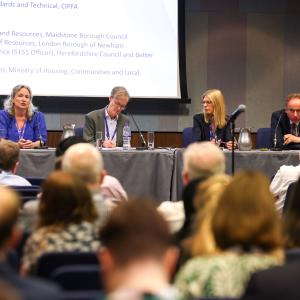Bank of England governor Mark Carney has unveiled new ‘forward guidance’ on interest rates, linked to employment levels. So what are the implications for promoting growth?
The Bank of England has just released its latest quarterly inflation report. Based on its recent record it was no surprise that the Bank failed to hold the consumer price index below 2 per cent. Indeed CPI inflation has been above target in 71 of the last 78 months.
Yet this is not the real failure of recent monetary policy. While GDP growth of 0.6 per cent in the second quarter of 2013 is worth celebrating, this level of growth has been seen three times since the 2008 crash. Short term periods of growth do not mean the economy is back to full potential. GDP remains 3.6 per cent behind its 2008 peak. Monetary policy has failed to get the economy back on track.
Further, much of the high CPI inflation can be explained by short term increases in oil prices, food prices and policy changes, such as the increase in VAT and university tuition fees. In contrast to the CPI, a measure of domestic inflation (the GVA deflator, which excludes changes in VAT and other direct taxes) shows that the picture has been subdued. This is more consistent with an economy where unemployment is 50 per cent above its 2007 level and with falling real wages.
Given this, the important feature of today's announcement is not be the Bank’s latest forecasts for CPI inflation. What is key is the way the new governor of the Bank, Mark Carney, has set a new course for monetary policy. Lessons from history and overseas suggest that this is the right thing to do.
As Milton Friedman showed in research on the USA’s Great Depression, cautious monetary policy can hold back growth. Fiscal stimulus achieved little during the Great Depression. The USA only bounced back when monetary policy was loosened through cutting the ties to the Gold Standard. More recently in Japan, after two decades of stagnation and large deficits from fiscal stimulus, monetary loosening known as ‘Abenomics’ has generated a 60 per cent rise in the stock market and GDP growth equivalent to an annual 4.1 per cent since November 2012.
These examples highlight how powerful monetary policy can be. They also point the way to what would be an ideal mix of policy settings – tight fiscal policy to eliminate the deficit, loose monetary policy (to help lean against this and support growth) and supply side reform to lift long run productivity.
The interaction of fiscal and monetary policy is especially important, with monetary policy providing a more independent, less politicised and timely way of supporting the economy through weak patches. Indeed, as Milton Friedman wrote, the goal of macroeconomic policy must not only be to stabilise prices in the long run but support ‘a reasonably stable economy in the short run.’ It should also not have escaped the Chancellor of the Exchequer's attention that monetary policy comes at a much lower fiscal cost than changing spending and tax plans.
But two key criticisms remain. The first is that the Bank may have run out of road with interest rates being at the lower bound and the effectiveness of quantitative easing being questioned. But options remain.
One option is for forward guidance, where - as became clear today - the Bank commits to holding policy loose. The key here is to ensure this guidance is conditional (ie based on what is happening in the real economy) rather than time based, as this ensures the Bank can change tack if necessary without damaging credibility. Further, as Reform has identified, the Bank has scope to also target nominal inflation (not just inflation but a combination of inflation and growth).
The second criticism is that following the global financial crisis the economy has undergone a permanent shock and will remain poorer as a result. But while some of the fall in GDP since the global financial crisis may be permanent, there is likely to be some share that could be recovered with appropriate policy action.
Indeed, the majority of macroeconomic forecasters put the economy at about 3 per cent below its potential. Using the Office for Budget Responsibility’s estimates, this translates into a total loss of income in 2012 of about £44 billion that could be rescued.
Patrick Nolan is chief economist at the Reform think-tank. Their latest report, Kick-starting growth: monetary policy holds the key, is available at www.reform.co.uk









